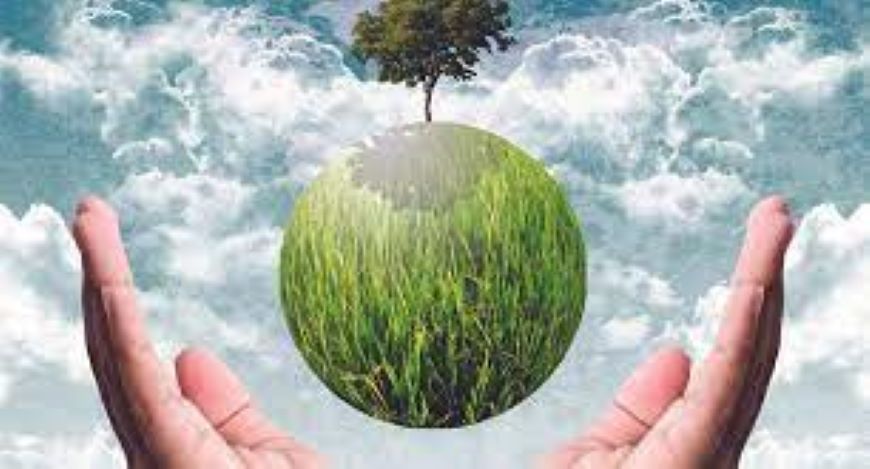Nature, with its intricate and awe-inspiring creations, has served as a source of inspiration for human innovation since time immemorial

As humanity grapples with the consequences of unchecked industrialization and resource exploitation, there is a growing realization that solutions lie not only in advanced technology but also in emulating the intricate systems and patterns found in the natural world. Green Intelligence encapsulates a multidisciplinary approach that draws influence from nature’s designs, processes, and interactions, with the aim of creating innovative and sustainable solutions across various fields, ranging from architecture and engineering to medicine and materials science etc.
Tribal communities around the world have often demonstrated a deep understanding of sustainability through their traditional practices and ways of life. Take for instance, the Huaorani Indians, also known as the Waorani or Waodani, an indigenous group native to the Amazon rainforest of Ecuador. Their unique way of life and cultural practices offer valuable insights that can teach us important lessons about human-environment relationships, community dynamics, and the preservation of traditional knowledge.
Biomimicry
There is another term known as ‘Biomimicry’, coined by biologist Janine Benyus, which also refers to emulating nature’s solutions in order to create more efficient, resilient and eco-friendly technologies. From the streamlined forms of birds’ wings influencing airplane design to the self-healing properties of certain plants, the study of lotus leaves leading to self-cleaning materials, and so on, biomimicry transforms biological insights into technological breakthroughs. This approach not only results in solutions that consume fewer resources but also cultivates a deeper understanding and appreciation for the natural world.
One remarkable example of biomimicry in architecture is the Eastgate Centre in Zimbabwe, which takes inspiration from termite mounds. Termites have mastered the art of regulating temperature within their intricate mounds despite extreme external conditions. The Eastgate Centre replicates this thermoregulation process using passive cooling techniques, reducing energy consumption and minimizing the building’s carbon footprint.
The streamlined shape of the humpback whale’s flippers, with its characteristic tubercles, inspired researchers to develop more efficient wind turbine blades and fans. These tubercles help reduce drag and improve lift, resulting in enhanced energy efficiency. Furthermore, the gecko’s incredible ability to cling to surfaces, even upside down, has inspired the creation of adhesives that do not rely on glues or tapes. By mimicking the gecko’s intricate foot structure, researchers have developed materials that offer strong, reversible adhesion without causing damage, opening up possibilities in medical bandages, robotics, and more.
Energy production and consumption
Photovoltaic technology, for instance, draws inspiration from the way plants convert sunlight into energy. Mimicking the photosynthetic process, solar panels harness the power of the sun to generate electricity, providing a clean and renewable energy source. Similarly, wind turbine designs often mimic the shape and movement of trees swaying in the wind, optimizing their ability to capture kinetic energy.
Agriculture
Traditional farming practices often degrade soil quality and require copious amounts of water and chemical inputs. By studying the symbiotic relationships between plants, fungi, and bacteria in natural ecosystems, regenerative agriculture seeks to create self-sustaining and resilient farming systems. Cover crops, crop rotation, and no-till farming are strategies inspired by nature’s ability to maintain balance and harmony.
Waste Management
In nature, waste is often transformed into resources for other organisms, creating a circular and efficient system. Taking cues from this, the concept of the circular economy promotes the reduction, reuse, and recycling of materials, minimizing waste and conserving resources.
Urban Planning and Architecture
Cities are complex ecosystems with diverse needs, and integrating natural systems can lead to more sustainable urban environments. Green roofs and vertical gardens, for instance, mimic natural landscapes in densely populated areas, providing benefits like temperature regulation, improved air quality, and enhanced aesthetics. The result is a harmonious blend of human innovation and natural resilience.
Biodiversity Conservation
Ecosystems are intricate webs of interdependence, where each species plays a vital role. Recognizing the importance of preserving biodiversity, conservation efforts like rewilding are now focusing on restoring ecosystems, degraded landscapes, and protecting keystone species that have a disproportionate impact on their environment.
However, there are a lot of challenges faced. Translating complex biological processes into practical human applications can be intricate and demanding. Moreover, there is a danger of oversimplification or misunderstanding of natural systems, leading to unintended consequences. Ethical considerations also arise when utilizing organisms or processes in ways that could disrupt ecosystems or exploit them for human gain. Positively, striking the right balance between innovation, respect for the environment, and responsible use of biomimetic technologies, the scientists, engineers, and designers continue to uncover the secrets of the natural world, paving way for a more sustainable and harmonious future.

